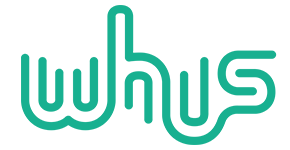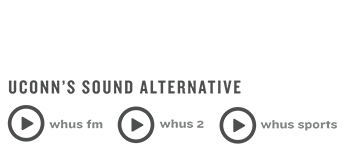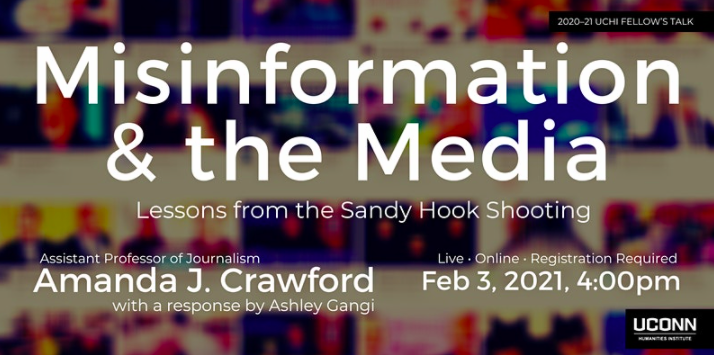By Grace McFadden
On Feb. 3, University of Connecticut professor of journalism Amanda Crawford gave a talk titled Misinformation & The Media: Lessons from the Sandy Hook Shooting.
The talk, which was part of UConn Humanities Institute Fellow’s Talk speaker series, discussed journalism ethics in relation to the Sandy Hook school shooting in 2012 and how breaking news decisions contributed to later misinformation. Crawford is also working on an upcoming book on the subject as part of a fellowship with UCHI.
Crawford started the talk by relating her research to some recent history.
“I started this project because I was growing increasingly concerned about misinformation and conspiracy theories invading public discourse. And in the years since then, that concern has only grown with greater urgency as we’ve seen conspiracy theories, hoaxes and denials really gain prominence in this country,” she said. “They even inspired a deadly attack on the U.S. Capitol last month that was indeed an attack on democracy itself.”
Crawford discussed the problem of misinformation in society and traced some of the current trends back to Sandy Hook. Before misinformation became as prominent in society as it is today, denial of the mass shooting at Sandy Hook Elementary School revealed how outrageous ideas about current events could spread online, infect public discourse and lead to real world harm, she said.
“I think it is important to understand how we got here,” Crawford said. “And the aftermath of the massacre of 20 children and six adults in Newtown, Connecticut eight years ago is one place to start.”
Most of Crawford’s talk focused on the mistakes made by the media in the breaking news coverage of Sandy Hook, which she referred to as “absolute chaos.” For example, conflicting reports about the weapons the shooter used have provided fodder for conspiracy theorists who point out discrepancies in reporting as a way to prove that the event was somehow faked.
“As news was breaking about this event, there were so many different reports about the combination of weapons, and this has lasted around for years,” she said.
According to Crawford, Sandy Hook was the first shooting to really be subject to the social media news cycle. This meant that reporters and viewers were hunting for any information they could get, which, in turn, caused more errors in breaking news coverage.
“In the first hours, as reporters were scrambling for information, they reported other shooters at other crime scenes,” she said. “TV cameras showed images of people being arrested and handcuffed. For several hours the day of the shooting, the shooter’s brother was named and labeled as a mass murderer.”
In an interview a few days after the presentation, Crawford explained that she chose to research Sandy Hook because it encapsulated the conflict around misinformation.
“I wanted to find an area, a subject, a story, a book, a long story to follow, where you had this kind of battle between truth and lies and how it was gonna play out over time,” she said.
Despite her criticisms, Crawford emphasized that journalists were only one piece of the misinformation puzzle and that good journalism is part of a functioning society.
“I think journalists play a remarkably important role in society, but especially in American democracy, because if we have a government by and for the people, you need to be informed about what that government’s doing and someone needs to hold the powerful accountable,” she said.
This is why Crawford studies journalism ethics.
“When we produce ethical reporting, when we do the job right, when we seek truth and facts and that’s our primary motivator, it’s better for society,” she said. “Now, does society trust us all the time? We’ve got a lot of work to do on that. And society has a lot of work to do on that, too.”


